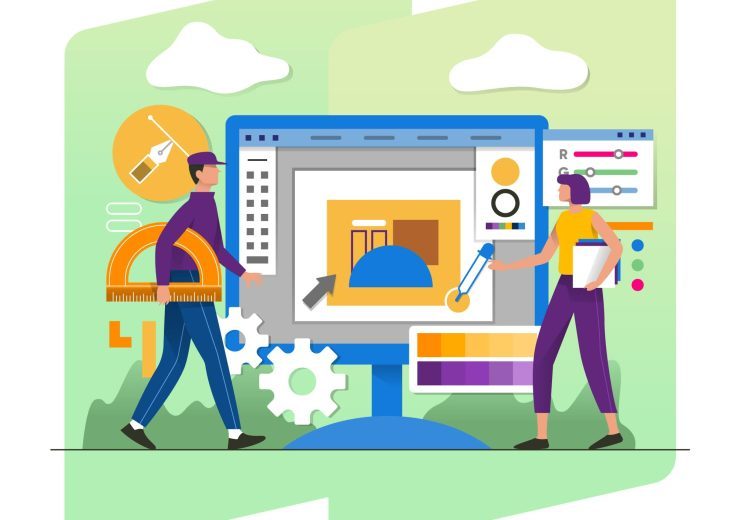The Importance of Accessibility in Website Design

In today’s digital age, websites serve as the primary interface between individuals and the online world. Whether it’s for personal use, business, education, or entertainment, the internet has become an integral part of our lives. However, not everyone experiences the web in the same way. Many individuals with disabilities face significant barriers when navigating websites that are not designed with accessibility in mind. This is why the importance of accessibility in website design cannot be overstated.
What Is Web Accessibility?
Web accessibility refers to the practice of designing and developing websites and web applications that can be used and understood by everyone, regardless of their abilities or disabilities. It’s about ensuring that people with disabilities can perceive, understand, navigate, and interact with the web effectively.
Accessibility encompasses various disabilities, including:
- Visual Impairments: People who are blind or have low vision may use screen readers or braille displays to access websites.
- Hearing Impairments: Individuals who are deaf or hard of hearing may rely on captions, transcripts, or sign language videos to access audio content.
- Motor Disabilities: People with limited motor control might use assistive devices like keyboard shortcuts, voice recognition software, or switch devices.
- Cognitive Disabilities: Individuals with cognitive impairments may require simplified language, consistent navigation, and clear layouts.
- Neurological Disabilities: Conditions like epilepsy may require websites to avoid flashing or rapidly changing content that could trigger seizures.
The Legal Framework
Beyond the moral imperative, there are legal obligations for website accessibility. Various countries have enacted laws and regulations that require websites to be accessible. In the United States, for example, the Americans with Disabilities Act (ADA) and Section 508 of the Rehabilitation Act mandate accessibility for federal agencies and organizations receiving federal funding. Similarly, the Web Content Accessibility Guidelines (WCAG) are an international standard that provides guidelines on how to make web content more accessible.
The Benefits of Accessibility
Now that we’ve established what web accessibility is and why it’s important from a legal standpoint, let’s delve into the numerous benefits it offers.
1. Inclusivity
Web accessibility is fundamentally about inclusivity. When your website is accessible, you welcome a more diverse audience. This not only aligns with principles of social responsibility but also expands your potential user base.
2. Improved User Experience
Accessibility features, such as alt text for images or logical page structures, enhance the overall user experience for everyone. Clear navigation and well-structured content benefit all users, not just those with disabilities.
3. SEO Advantages
Many accessibility best practices coincide with good search engine optimization (SEO). For example, providing descriptive alt text for images can improve your website’s visibility in search results.
4. Legal Compliance
As mentioned earlier, complying with accessibility laws and standards helps you avoid legal troubles and potential fines. It also demonstrates your commitment to providing equal access.
5. Positive Brand Image
A commitment to accessibility sends a positive message about your brand. It shows that you care about your users and are committed to providing an inclusive online experience.
6. Increased Engagement
Accessible websites tend to have longer visit durations and lower bounce rates. When users can easily find and understand your content, they are more likely to engage with it.
7. Innovation and Creativity
Designing for accessibility often leads to innovative solutions and creative thinking. Overcoming accessibility challenges can spark new ideas that benefit all users.
Common Misconceptions about Accessibility
Before addressing some frequently asked questions (FAQs) about web accessibility, let’s dispel a few common misconceptions:
1. Accessibility Is Only for People with Disabilities
This is a common misconception. While accessibility primarily benefits individuals with disabilities, it also enhances the user experience for everyone. For instance, closed captions benefit not only the deaf but also people in noisy environments or those who prefer reading to listening.
2. Accessibility Is Too Expensive
While it’s true that accessibility may require an initial investment, the long-term benefits far outweigh the costs. Moreover, many accessibility improvements are relatively inexpensive or can be incorporated into regular web development practices.
3. It’s Too Technical
Accessibility may seem complex, but many tools and resources are available to make the process easier. It’s also essential to involve designers, developers, and content creators in the accessibility process to ensure a holistic approach.
4. It Will Stifle Creativity
Accessibility guidelines provide a framework, but they don’t limit creativity. In fact, they can inspire new and innovative solutions that benefit all users.
Conclusion
web accessibility is not just a moral obligation; it’s a legal requirement and a strategic advantage. Designing websites with accessibility in mind benefits not only individuals with disabilities but also improves the user experience for everyone. By addressing common misconceptions and understanding the key principles of web accessibility, businesses and individuals can create a more inclusive online environment. Embracing accessibility is not only the right thing to do; it’s a step toward a more accessible and equitable digital future.
Remember that web accessibility is an ongoing process. As technology evolves and our understanding of accessibility deepens, it’s essential to stay informed and continually improve your website’s accessibility.
FAQs About Web Accessibility
Let’s address some common questions that often arise regarding web accessibility:
What are the key principles of web accessibility?
Web accessibility is guided by four key principles outlined in the WCAG:
- Perceivable: Information and user interface components must be presented in a way that users can perceive, such as providing text alternatives for non-text content.
- Operable: User interface components and navigation must be operable, including keyboard accessibility and avoiding content that causes seizures or physical discomfort.
- Understandable: Information and operation of the user interface must be understandable, with clear language, predictable navigation, and error prevention.
- Robust: Content must be robust enough to work with current and future technologies, ensuring compatibility as technology evolves.
How can I test my website for accessibility?
There are several tools and resources available for testing web accessibility. Some popular options include:
- Web Accessibility Evaluation Tools: Tools like WAVE, axe, and WebAIM provide automated checks for accessibility issues.
- Manual Testing: Manual testing involves using assistive technologies like screen readers, keyboard navigation, and voice recognition to interact with your website.
- User Testing: Conduct usability tests with individuals with disabilities to gather real-world feedback.
- Audits by Experts: Consider hiring accessibility experts or consultants to perform thorough audits of your website.
Is web accessibility only important for large organizations?
No, web accessibility is important for organizations of all sizes. While larger organizations may have more significant legal and financial implications, smaller businesses can also benefit from accessibility in terms of a broader audience and improved user experience.
Can I retrofit accessibility features into an existing website?
Yes, it’s possible to make an existing website more accessible. However, it may be more challenging and time-consuming than incorporating accessibility from the start. It’s generally recommended to prioritize accessibility in the design and development process.
What are some common accessibility issues to watch out for?
Common accessibility issues include:
- Lack of Alt Text: Images without descriptive alt text are inaccessible to screen reader users.
- Inadequate Heading Structure: A clear heading structure is essential for navigation and understanding content.
- Keyboard Traps: Ensure that users can navigate your site with a keyboard and not get stuck in certain areas.
- Missing or Inconsistent Labels: Form fields and buttons must have clear and consistent labels.
- Contrast Issues: Low contrast between text and background can make content difficult to read.







